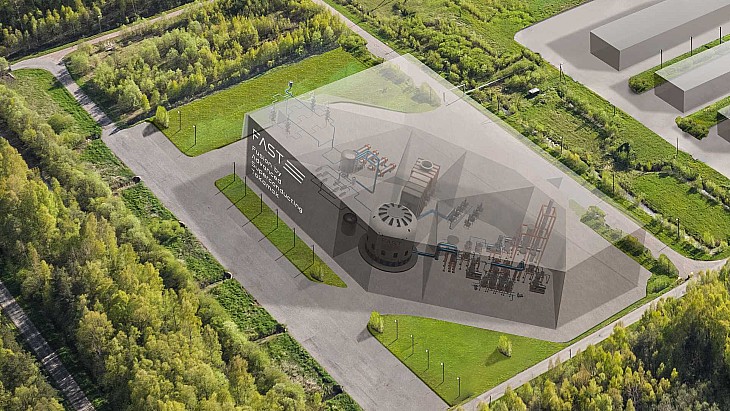High fusion power was consistently produced for 5 seconds during JET's final deuterium-tritium experiments resulting in a ground-breaking record of 69 megajoules, using only 0.2 milligrams of fuel, the EUROfusion consortium and UK Atomic Energy Authority (UKAEA) announced. This exceeded the previous world record it set in 2021, when it produced 59 megajoules over 5 seconds.
The tokamak's final experiments using deuterium and tritium fuel were conducted over seven weeks from August to October last year, ahead of its retirement following its final pulse in December.
JET, which is in Culham, near Oxford in the UK, was a European project built and used collaboratively by European researchers. It is now owned, and in recent years has been operated by, the UKAEA, and used by scientists from 28 European countries to conduct research into the potential for carbon-free fusion energy in the future through work coordinated by the EUROfusion consortium. The tokamak's first deuterium-tritium experiments took place in 1997.
"This world record is actually a by-product. It was not actively planned, but we were hoping for it," Max Planck Institute for Plasma Physics scientist Athina Kappatou, one of nine Task Force Leaders at JET, said. "This experimental campaign was mainly about achieving the different conditions necessary for a future power plant and thus testing realistic scenarios. One positive aspect, however, was that the experiments from two years ago could also be successfully reproduced and even surpassed."
JET was a tokamak fusion system with a doughnut-shaped vacuum chamber where, under the influence of extreme heat and pressure, gaseous hydrogen fuel becomes a plasma. The charged particles of the plasma can be shaped and controlled by massive magnetic coils placed around the vessel to confine the hot plasma away from the vessel walls. It was the only tokamak fusion machine in operation capable of handling tritium fuel, and was a key device in preparations for the multinational ITER fusion research project which is currently under construction in southern France.
As well as ITER, and the electricity-generating demonstration plant known as DEMO that is planned to be its successor, JET's findings also have implications for projects such as the UK's Spherical Tokamak for Energy Production (or STEP) prototype power plant and other fusion projects around the world.
"Our successful demonstration of operational scenarios for future fusion machines like ITER and DEMO, validated by the new energy record, instil greater confidence in the development of fusion energy," said EUROfusion Programme Manager Ambrogio Fasoli. "Beyond setting a new record, we achieved things we've never done before and deepened our understanding of fusion physics."
"JET's final fusion experiment is a fitting swansong after all the groundbreaking work that has gone into the project since 1983. We are closer to fusion energy than ever before thanks to the international team of scientists and engineers in Oxfordshire," said UK Minister for Nuclear and Networks Andrew Bowie.
The UK government's Fusion Futures programme has committed to invest GBP650 million (USD820 million in research and facilities to cement its position as a global fusion hub, Bowie added.
"JET has operated as close to powerplant conditions as is possible with today’s facilities, and its legacy will be pervasive in all future powerplants. It has a critical role in bringing us closer to a safe and sustainable future," UKAEA CEO Ian Chapman said.

.jpg)



_82983.jpg)
_34792.jpg)
_16403_79272.jpg)


_76087_55556.jpg)



